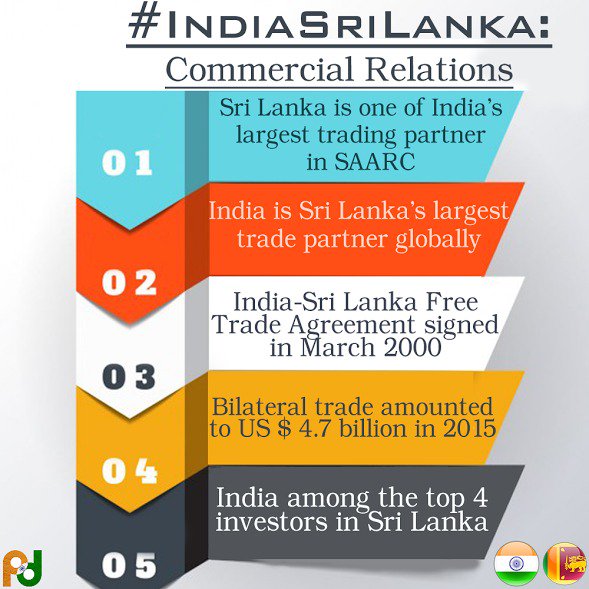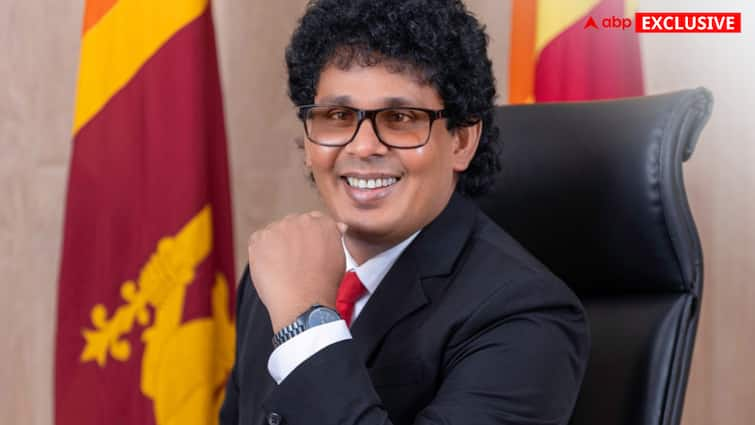Wasantha Samarsinghe, Minister of Trade, Commerce, Food Security and Cooperatives, Government of Sri Lanka, on Friday told ABP Live that despite having one of the oldest trade agreements with India – the India-Sri Lanka Free Trade Agreement (ISFTA) – the utilisation remained far below potential and underlined the need to “mobilise and revisit the agreement”.
The India-Sri Lanka Free Trade Agreement (ISFTA) building on zero-duty access for thousands of tariff lines, with specific provisions and quotas for products like tea, textiles, and garments to benefit both nations, has led to facilitation of a 10-fold increase in Sri Lankan exports to India besides helping to create new export capacities in key sectors like agricultural products, textiles and garments, as per industry and experts.
“We have a more than 25-year-old, as well as the oldest, trade agreement with India. When we consider the India-Sri Lanka trade relations, we observe that we (Sri Lanka) are importing many consumer goods from India: lentils, onions and potatoes. That is why our trade gap is very huge. When we import goods, say worth USD 5 billion from India, we are exporting more than USD 600 million to India,” Samarsinghe said, speaking exclusively to ABP Live on the sidelines of an industry event.

Trade Deficit Persists Despite Longstanding FTA
The ISFTA has allowed Indian exports to Sri Lanka to grow fivefold, in pharmaceuticals, machinery, automotive parts and petroleum products, making India the island nation’s top trading partner and Sri Lanka a key market for Indian products.
However, the bilateral trade is marked by a persistent trade deficit for Sri Lanka, as Indian quotas on products like apparel (e.g., the 8-million-piece quota) restrict Sri Lankan exports and prevent its key industries from fully benefiting from India’s large market, according to insights from Observer Research Foundation. India maintains a consistent trade surplus with Sri Lanka, with India’s exports in FY2023-24 at USD 4.1 billion compared to Sri Lanka’s USD 1.4 billion.
In 2023, the trade gap was a negative USD 2.34 billion for Sri Lanka, with imports from India at USD 3.17 billion and exports to India at USD 830 million. This surplus reflects India’s larger role in bilateral trade, despite the FTA.
“We need more export facilities with India, but as a country, when we consider India, we don’t believe we will have a chance to balance the trade gap with India because of the kind of economy it has, Samarsinghe told ABP Live.
“India is giving good support time to time to Sri Lanka, to fill the shortage of goods. This is why this kind of trade gap is maintained periodically, but we have some chance to increase our exports now,” said the Minister who is leading a high-level delegation to India.
“The India-Sri Lanka trade and economic ties could get a major boost with an agreement between the Federation of Indian Export Organisations and the National Chamber of Exporters of Sri Lanka to enhance bilateral trade and economic collaboration through a structured framework to enhance trade linkages. This is a timely and strategic initiative that will catalyse expanding trade volumes by leveraging each country’s strengths, enhancing competitiveness and facilitating smoother access to markets,” says Sahai, DG & CEO, FIEO.
The mechanism will foster stronger networking opportunities between exporters of both countries, promote joint trade initiatives and participation in trade fairs, exhibitions, and buyer–seller meets, facilitate exchange of trade delegations and market intelligence.
Samarsinghe agrees that the LoC (Line of Credit) from India to Sri Lanka has been a “very good support for Sri Lanka, particularly, during the Covid period and then during our economic crisis. “At that time, the USD 900 million LoC supported us in overcoming the economic crisis and especially after that in the debt-free structuring process,” the Minister said.
India, as per the Ministry of External Affairs, out of the total LOCs of USD 32 billion, in keeping with the high priority to neighbouring countries, has extended LOCs of more than USD 2 billion to Sri Lanka. The credit line is part of about USD 4bn in emergency assistance extended by India during the peak of Sri Lanka’s crisis in 2022.
Economic Recovery Opens Doors for Indian Investment
When asked about Sri Lanka’s progress in managing debt and economic recovery, the Lankan Minister also informed ABP Live that with the economic recovery in Sri Lanka being well-managed, the country was exploring Indian investments in potentially attractive sectors such as tourism and food processing.
“Right now, the restructuring process is successfully planned. There is a wide range of investment opportunities for any country to come to invest, China or India. There is no restriction on any country or any company,” said the minister.
The optimism stems from S&P Global Ratings’ recent upgrade on September 19 of Sri Lanka’s long-and short-term foreign currency sovereign credit ratings with a stable outlook are supported by its strong economic recovery, rapid fiscal consolidation and reform (supported by an ongoing IMF programme), accumulation of foreign exchange reserves, an improving external position, and sustained progress in reducing fiscal risks from its state-owned enterprises.
The global agency expects Sri Lanka’s economic growth to continue its strong recovery this year, with the economy performing well across sectors, including agriculture, textile and garment manufacturing and tourism.
Moreover, Sri Lanka’s external position has improved. Its current account balance flipped to surpluses starting from 2023 from sustained structural deficits. While the current account surplus was initially due to wide-ranging import restrictions, it has remained even in the first seven months of this year following the lifting of vehicle import restrictions.
Taking the cue, Tata Motors has just introduced 10 new commercial vehicles in partnership with its authorised distributor in Sri Lanka to provide advanced transport solutions and mark a major expansion of its presence in the country.



